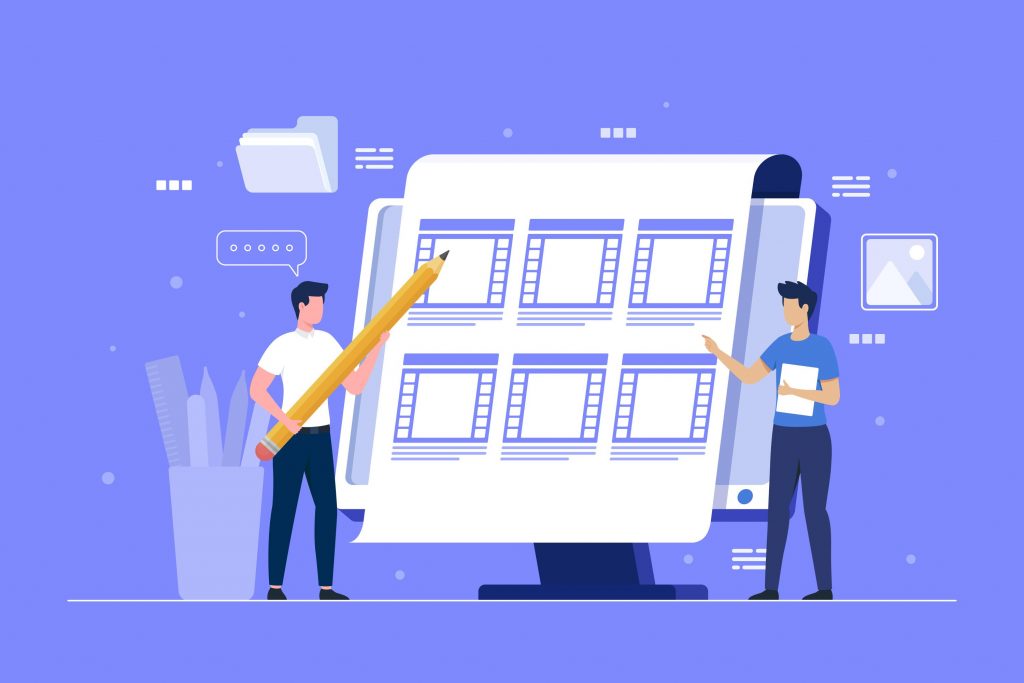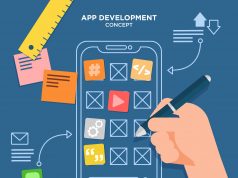In the ever-evolving field of UI/UX design, where digital interactions shape modern experiences, simplicity is a foundational principle. It involves distilling complex ideas and functions into an intuitive interface that users can navigate effortlessly. Simplicity isn’t about minimalism for aesthetics alone; it’s about ensuring that every element and interaction serves a clear purpose, enhancing user comprehension and engagement. In this blog, we’ll explore how the UI/UX design portfolio in the USA leverages simplicity to improve user understanding and discuss its critical role in crafting compelling digital experiences.
What is a UX design portfolio?
A UX design portfolio is a comprehensive showcase of a designer’s work in the field of user experience (UX) design, encapsulating their skills, creativity, and problem-solving abilities. It presents a curated selection of design projects, ranging from web and mobile applications to websites, along with detailed insights into the designer’s process, challenges faced, and solutions implemented to enhance user interactions. This portfolio extends beyond final visual designs, often incorporating wireframes, prototypes, user research findings, and personas, demonstrating the designer’s holistic approach to UX design. Ultimately, a well-crafted UX design portfolio serves as a potent tool for designers to impress potential employers or clients and secure opportunities in the competitive realm of UX design.
What should you put in your UX portfolio?
Your UX design portfolio should serve as a compelling narrative of your skills and expertise in the field. Here’s a breakdown of the key elements that should be included:
Diverse Project Selection:
A well-rounded portfolio should showcase a variety of projects. Include projects from different domains, such as mobile apps, web interfaces, or even physical products with digital components. Diversity demonstrates your adaptability and problem-solving skills across different contexts.Clear Problem Statements:
For each project, articulate a clear problem statement. This not only sets the context but also highlights your ability to identify and define user-centric challenges, a crucial skill in UX design.Process Insights:
Providing insights into your design process is essential. Explain how you conducted user research, your approach to ideation, and the methods used for prototyping and testing. A transparent process demonstrates your methodology and problem-solving strategies.Results and Impact:
Quantify the impact of your work. Describe how your design solutions positively influenced user behavior or business objectives. Metrics like increased conversion rates, reduced bounce rates, or improved user satisfaction can substantiate your design prowess.User-Centered Design:
Firstly emphasize user-centered design principles throughout your portfolio. Show how you incorporated user feedback and iterated on designs based on usability testing. This demonstrates your commitment to creating products that truly meet user needs.Visual and Interaction Design:
Showcase your skills in visual and interaction design. Present high-fidelity mockups that display your attention to detail, typography choices, color schemes, and overall aesthetics. Use interactive prototypes to illustrate how users engage with your designs.Resume and Contact Information:
End your portfolio with your resume and clear contact information. Make it easy for potential employers or clients to get in touch.
By incorporating these elements into your portfolio, you’ll not only provide a comprehensive view of your skills and experiences but also demonstrate your ability to tackle diverse challenges in the field of UX design. This holistic approach can make your portfolio stand out to potential employers and clients in the competitive job market.
Craft a UI/UX Design Portfolio That Stands Out in the US Job Market

Crafting a UI/UX design portfolio that stands out in the competitive US job market is essential for landing your dream job. Here are some strategies to help you achieve just that:
Tailor Your Portfolio to the Job:
Customize your portfolio for each job application. Furthermore, Highlight projects and skills that align with the specific job requirements. This demonstrates that you’ve done your homework and are a perfect fit for the role.Showcase a Range of Skills:
In the US job market, versatility is highly valued. Include projects that display your proficiency in various aspects of UX/UI design, such as user research, wireframing, prototyping, and user testing. This versatility can make you a more attractive candidate.Tell a Story:
Narrate the story behind your projects. Firstly explain the challenges you encountered, your problem-solving process, and the impact of your design solutions. Storytelling helps potential employers understand your design thinking and decision-making abilities.Highlight Collaboration:
Collaboration is key in the US job market, so emphasize teamwork in your portfolio. Explain how you collaborated with cross-functional teams, developers, or other stakeholders. Showcase your ability to work in dynamic, collaborative environments.Stay Updated:
Given the fast-paced nature of the tech industry in the US, ensure your portfolio reflects your knowledge of current design trends, tools, and technologies. Showcase your adaptability by integrating the latest design practices into your projects.Usability and Accessibility:
Furthermore, with a growing emphasis on user-centered design and accessibility in the US, consider including projects that demonstrate your commitment to making products usable by a diverse range of users, including those with disabilities.Show Results:
Whenever possible, include measurable results and outcomes from your projects. Metrics like increased conversion rates, improved user satisfaction scores, or reduced user errors can add significant value to your portfolio.
By implementing these strategies, you’ll be well on your way to crafting a UI/UX design portfolio that not only showcases your skills but also resonates with potential employers in the US job market. Remember, your portfolio is a reflection of your capabilities and can be a powerful tool in landing your ideal UX/UI design role.
Tips for Creating a Strong UI/UX Design Portfolio for the US Market
Creating a strong UI/UX design portfolio tailored to the US market requires a strategic approach to showcase your skills and stand out among competitors. Here are five tips to help you craft an impressive portfolio:
Quality Over Quantity:
Instead of overwhelming your portfolio with numerous projects, focus on showcasing a select few that demonstrate your best work. Firstly quality is paramount. Choose projects that highlight your problem-solving abilities, creativity, and versatility in design.Highlight Your Process:
Beyond just showcasing the final designs, provide insights into your design process. Explain the research, ideation, and prototyping phases. Emphasize your ability to empathize with users, define problems, and iterate toward effective solutions.User-Centered Case Studies:
Present your projects as user-centered case studies. Specifically define the problem, the user personas, and the challenges you faced. Describe how your design decisions addressed these challenges and improved the user experience.Diverse Project Types:
Include a diverse range of projects to demonstrate your adaptability. Showcase projects for different industries, platforms (web, mobile, desktop), and target audiences. This diversity indicates your ability to tackle varied design challenges.Explain Your Impact:
Quantify your achievements wherever possible. Mention metrics like increased conversion rates, reduced bounce rates, or improved user satisfaction scores resulting from your design solutions. Providing tangible evidence of your impact adds credibility to your portfolio.Responsive Design Showcase:
Given the importance of responsive design, ensure that your portfolio itself is a testament to your skills. Display your portfolio in a responsive manner to demonstrate your proficiency in designing for different screen sizes and devices.Consistency and Clarity:
Maintain a consistent visual style throughout your portfolio. Ensure that your portfolio’s design and layout are clean, intuitive, and easy to navigate. Clarity and attention to detail reflect positively on your design sensibilities.
Remember, your UI/UX design portfolio is your calling card in the competitive US job market. Tailor it to showcase your expertise, problem-solving capabilities, and commitment to user-centered design. Keep it updated, and don’t hesitate to seek feedback from mentors or peers to refine and improve your presentation. A well-crafted portfolio can significantly enhance your chances of securing your desired UI/UX design role.
UI/UX Design Portfolio Best Practices for the US Job Market
To stand out in the competitive US job market for UI/UX designers, it’s essential to adhere to portfolio best practices that resonate with employers’ expectations. First and foremost, tailor your portfolio to match the specific job you’re applying for. By highlighting relevant skills and showcasing projects that align with the job description, you demonstrate that you understand the role’s requirements and are ready to tackle its challenges.
Diversity in your portfolio is another key factor. It’s crucial to exhibit a broad range of projects, from various platforms to different industries and user demographics. This diversity not only underscores your adaptability but also signals your readiness to tackle diverse design challenges. It’s a testament to your versatility and ability to thrive in the dynamic and multifaceted world of UI/UX design.
Furthermore, presenting your work as engaging case studies can make a significant difference. Employers want to see your problem-solving skills and the impact of your design solutions. Clear and comprehensive case studies, complemented by visuals like wireframes and prototypes, help employers understand your design process and the tangible results you’ve achieved. These best practices collectively position your UI/UX design portfolio as a powerful tool to land your dream job in the ever-evolving US job market.
How to Highlight Your Design Process

Effectively highlighting your design process in your UI/UX design portfolio can make a significant difference in showcasing your skills and problem-solving abilities to potential employers. Here are some key steps to ensure that your design process takes center stage:
Project Narration:
Firstly, start by narrating the story of your project. Give a clear, concise overview of the problem you were tasked to solve or the goal you aimed to achieve. Explain the context and any constraints you had to work with. This narrative should engage the viewer and create a compelling context for your design process.User-Centered Research:
Emphasize your user-centered approach to design. Describe your research methods, such as user interviews, surveys, or usability testing. Share key findings and insights that guided your design decisions. Include user personas or journey maps to illustrate how you synthesized research data into actionable design solutions.Iterative Design Evolution:
Showcase the evolution of your design. Present initial concepts, wireframes, and prototypes alongside their final iterations. Secondly, Highlight specific design challenges you encountered and how you iteratively improved your solutions based on user feedback and usability testing results. This demonstrates your ability to adapt and refine designs.Interactive Prototyping:
Additionally, incorporating interactive prototypes into your portfolio is essential. Interactive mockups or prototypes bring your designs to life, allowing viewers to experience the user journey firsthand. Explain how these prototypes were used for usability testing and how they contributed to the refinement of your final design.Quantifiable Outcomes:
Provide evidence of the impact your design had on the project. Share measurable outcomes, such as improved user engagement metrics, conversion rates, or user satisfaction scores. Clearly connect these results to your design decisions and iterations, demonstrating the tangible benefits of your work.
By incorporating these elements into your portfolio, you create a comprehensive and persuasive narrative that not only showcases your design skills but also communicates your ability to approach design challenges methodically and deliver results. This holistic view of your design process enhances your credibility as a UI/UX designer and increases your chances of landing your dream job in the competitive US job market.
Getting Feedback on Your Portfolio
Receiving feedback on your UI/UX design portfolio is an indispensable part of the journey toward crafting a compelling presentation. It’s essential to seek diverse perspectives when soliciting feedback. Reach out to various individuals, including fellow designers, mentors, professors, or even friends and family who may not possess a design background. Diverse viewpoints provide fresh insights and help uncover areas that may need enhancement. These distinct perspectives can reveal blind spots you might have missed in your portfolio.
When requesting feedback, consider asking specific questions related to your portfolio. For instance, you can inquire about the clarity of your project descriptions, the effectiveness of your visual storytelling, or the overall impression your portfolio conveys. Specific questions guide reviewers and lead to more actionable and precise feedback. This focused approach aids in pinpointing areas that require improvement, enabling you to work efficiently on enhancing your portfolio.
Conclusion
In conclusion, building a robust UI/UX design portfolio in the US involves more than just showcasing skills; it’s about weaving a compelling narrative of your design journey. furthermore, Your portfolio should be a reflection of expertise, creativity, and problem-solving acumen. To excel in this competitive landscape, one must approach portfolio creation with strategic precision. Start by defining your portfolio’s purpose and tailoring its content to spotlight your best work and design methodology. Harness the power of visual storytelling to engage your audience and leave a lasting impression. Feedback is invaluable; actively seek it from diverse sources to continually refine your portfolio in a field where innovation and user-centricity reign supreme, your portfolio serves as the key to unlocking promising career opportunities. Dedicate time and effort to craft a portfolio that authentically portrays your design journey and aspirations, and you’ll be on the path to securing your dream UI/UX design role in the US.
Read more:


















